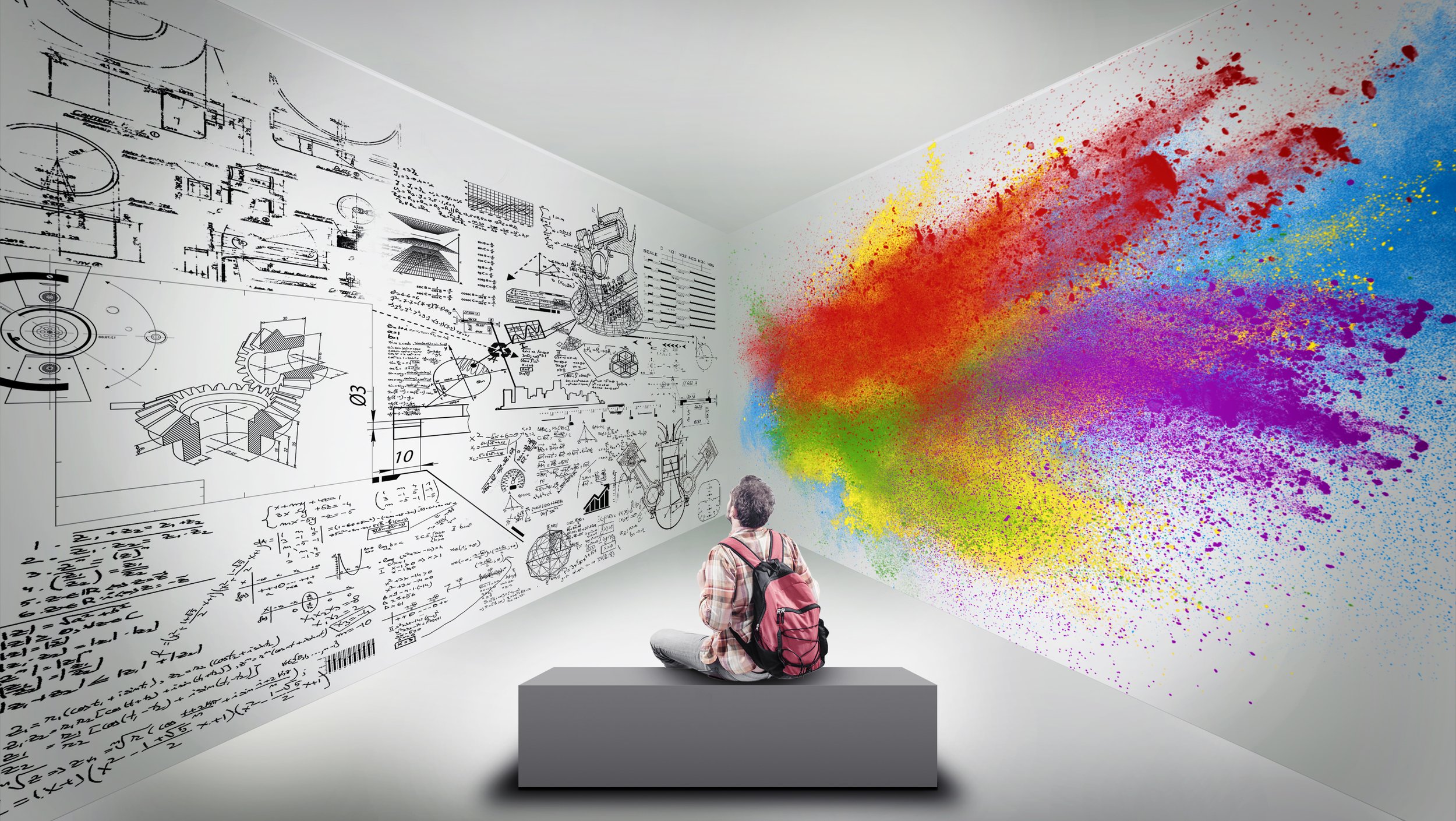“Left Brained” vs “Right Brained”
A surreal photograph of a person staring at two walls meeting in a corner. The right wall has rainbow paint, while the left wall is covered in graphs and diagrams.
There is a popular belief that people tend to be either “Right-Brained” or “Left-Brained.” You may have even heard someone say something like this in casual conversation or media:
“Oh, she’s so right-brained!”
or, “I’m not left-brained enough to get that.”
But have you ever wondered what that really means?
Right-Brained vs Left-Brained
Right-brained people are thought to be more creative and see the world through sensation, while left-brained people are thought to be more analytical and logic-oriented. According to a 2022 article from Harvard Health Publishing, Doctor Robert H. Shmerling suggests that–while there is some validity to this way of thinking– there is no discernible difference in neural activity between that of an artist’s brain versus that of a mathematician.
He goes on to break down the findings of a 2013 University of Utah brain scan study:
[The researchers] looked at the brain scans of more than 1,000 young people between the ages of 7 and 29 and divided different areas of the brain into 7,000 regions to determine whether one side of the brain was more active or connected than the other side. No evidence of "sidedness" was found. The authors concluded that the notion of some people being more left-brained or right-brained is more a figure of speech than an anatomically accurate description.
A colorful illustration of the major regions of the brain. It is shown from the side and above. The side view shows the frontal lobe, parietal lobe, temporal lobe, and occipital lobe. The top view is split in two to denote the left and right hemispheres.
So what’s really happening in our brains when we’re doing things like writing, singing, running, drawing, and solving math equations?
Most often the hemispheres are working together to do complex work, and people tend to need both left- and right-brained skills to do most complex tasks. Imagine, for instance, an author writing a fiction novel. Writing is a predominantly left-brain skill, while creativity and imagination is considered more of a right brain skill. Creative writing necessitates both hemispheres working together, using the corpus callosum (located in the center) to communicate.
Brain hemispheres, neurodiversity , and more brain science ahead!
The human brain is a fascinating and complex organ, and we have so much more left to learn about how each part of it works independently and as part of a whole. Researchers are still uncovering new information about how different neurotypes work as well.
Medical scientists have also uncovered a lot of fascinating information about how injured brains can recover, or how different parts of the brain can take over after one hemisphere is damaged. Want to learn more? Check out these helpful articles we referenced for this blog and keep an eye out on Mendo LEAP’s blog for more neuroscientific spotlights.



